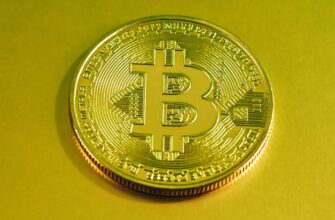Introduction: The Rise of Decentralized Trading
Peer-to-peer (P2P) trades are revolutionizing how people exchange assets directly without intermediaries. As digital platforms evolve, P2P marketplaces empower users to trade cryptocurrencies, collectibles, and services while maintaining control over transactions. This guide explores how P2P trading works, its benefits, risks, and practical steps to get started.
What Are P2P Trades?
P2P trades involve direct transactions between individuals through online platforms that facilitate matching buyers and sellers. Unlike traditional exchanges, P2P systems eliminate centralized authorities, allowing users to negotiate terms, select payment methods, and transfer assets autonomously. Common applications include:
- Cryptocurrency exchanges (e.g., Bitcoin, Ethereum)
- Digital collectibles and NFTs
- Local services and freelance work
- Physical goods marketplaces
How P2P Trading Platforms Work
P2P platforms act as secure matchmakers using escrow systems to protect both parties. Here’s the typical workflow:
- Listing Creation: Sellers post assets with preferred payment methods and terms.
- Buyer Selection: Buyers browse listings and initiate trade requests.
- Escrow Lock: Assets are temporarily held by the platform until payment confirmation.
- Payment & Verification: Buyers complete payment; sellers verify receipt.
- Asset Release: Escrow releases assets to the buyer upon confirmation.
Key Benefits of P2P Trading
- Lower Fees: Avoid middleman commissions common in centralized exchanges.
- Payment Flexibility: Choose from bank transfers, e-wallets, cash payments, or crypto.
- Privacy Control: Limited KYC requirements compared to traditional platforms.
- Global Access: Trade across borders without currency restrictions.
- Price Negotiation: Set custom rates based on market demand.
Risks and Challenges in P2P Trading
- Fraud Potential: Scammers may fake payments or listings (always use escrow!).
- Dispute Resolution: Mediation processes can be slow without centralized oversight.
- Price Volatility: Crypto values may shift during transaction windows.
- Regulatory Uncertainty: Tax and legal compliance varies by region.
- Technical Barriers: Requires basic digital literacy for secure transactions.
Getting Started with P2P Trading: 5 Simple Steps
- Research Platforms: Choose reputable sites like LocalBitcoins, Paxful, or Binance P2P.
- Secure Your Account: Enable 2FA and use strong, unique passwords.
- Verify Partners: Check trader ratings and transaction history before dealing.
- Start Small: Begin with low-value trades to build confidence.
- Document Transactions: Save chat logs and payment receipts for dispute resolution.
P2P Trading FAQ Section
Q1: Is P2P trading legal?
A: Yes, but regulations vary. Always comply with local laws regarding taxes and anti-money laundering (AML) requirements.
Q2: How are disputes resolved in P2P trades?
A: Platforms provide moderation teams. Escrow funds are frozen during investigation, with evidence determining the outcome.
Q3: What payment methods are safest?
A: Escrow-protected bank transfers or platform-integrated wallets. Avoid irreversible methods like gift cards with strangers.
Q4: Can I trade internationally via P2P?
A: Absolutely! Most platforms support cross-border trades, but consider currency conversion fees and transfer times.
Q5: How do I avoid scams in P2P trading?
A: Verify partner reputations, never release assets without payment confirmation, and use platform chat for all communication.
Conclusion: Embracing the Future of Exchange
P2P trades democratize commerce by putting control back into users’ hands. While risks exist, informed traders leverage escrow protection and community feedback to safely capitalize on flexible, low-cost transactions. As blockchain technology advances, P2P platforms will continue reshaping how we exchange value globally.








